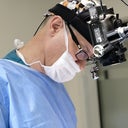Posted underRevision Rhinoplasty q&a
Deviated Goretex Implant. Will this be straightened over time? (Photo)
Hello. I've had an augmentation rhinoplasty last year through which a Goretex implant was placed in my nose to improve bridge height. However, that implant deviated to the point where I can move it. Last month, I had it fixed but I can see that the implant is still tilting to the same side although not as bad as before and not as visibly movable as before. My question is, will this be straight over time? Or is it really still deviated and there is something my doctor isn't getting right?
Answers (5)
From board-certified doctors and trusted medical professionals
More Revision Rhinoplasty Questions
See all Revision Rhinoplasty Q&AWE SEND PRETTY
EMAILS
What’s trending? Who’s turning heads? Which TikTok myths need busting? We’ve got you. No fluff, no gatekeeping—just real talk. Get our free, unfiltered newsletter.




